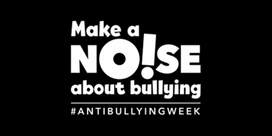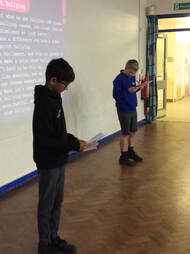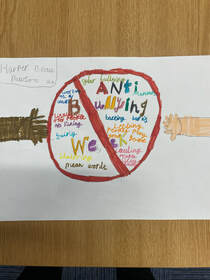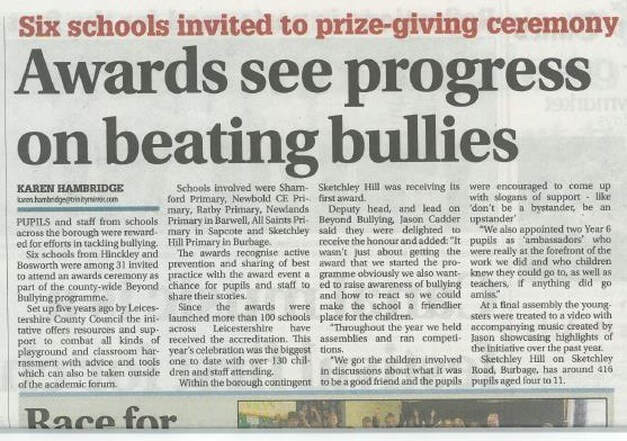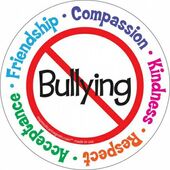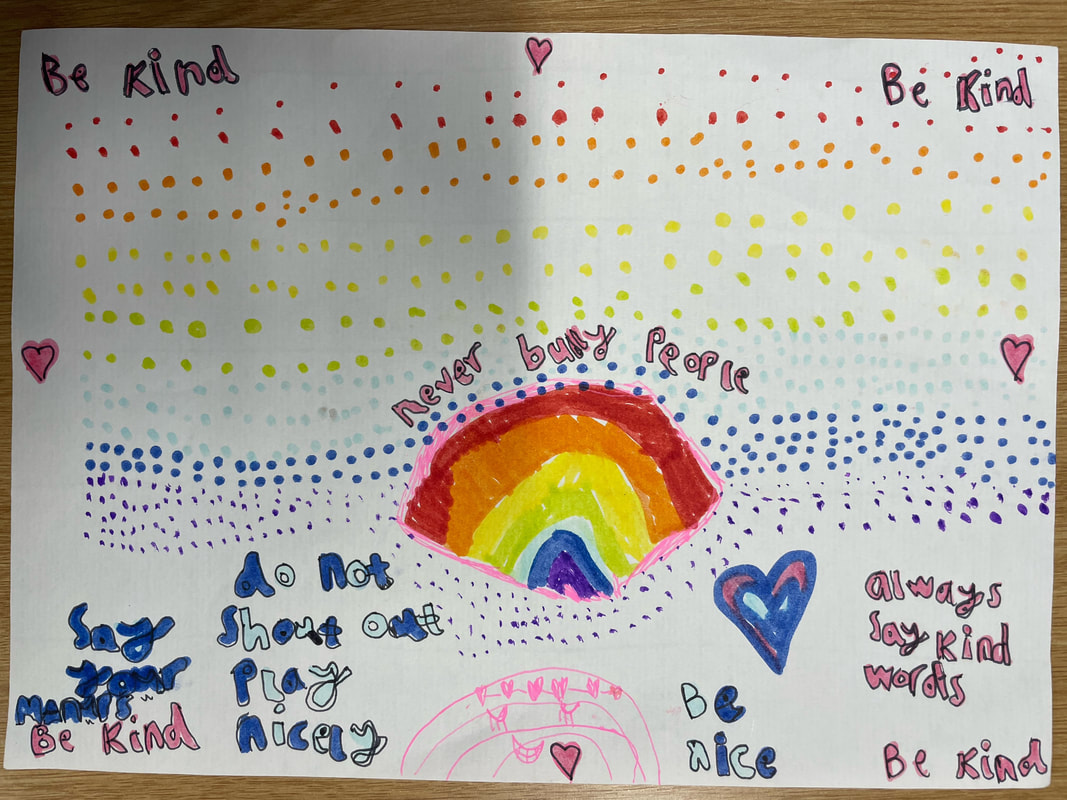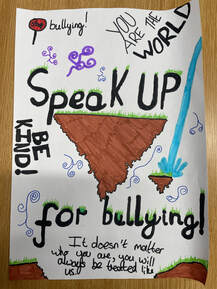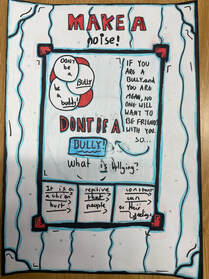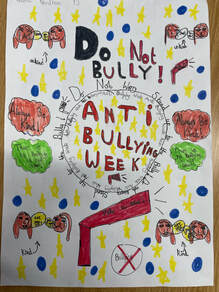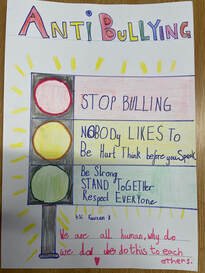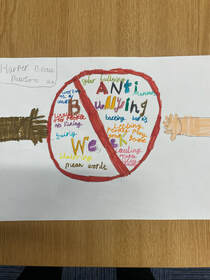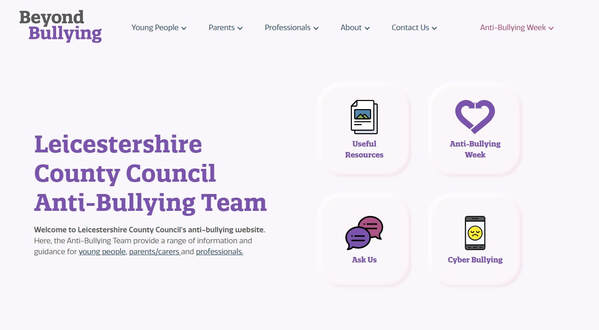Anti-Bullying
|
|
Our Year 6 ambassadors introduced this year's theme in a whole school assembly!
They shared information about what bullying is and how we can combat it and who we can trust! The theme this year is 'Make A Noise About Bullying' and it took place from Monday 13th to Friday 17th November. Children took part in a range of activities to celebrate the week. |
Bullying is defined as, ‘behaviour by an individual or group, repeated over time, that intentionally hurts another individual or group either physically or emotionally’.
|
We believe that bullying of any kind is totally unacceptable and will not be tolerated in our school. We take all incidents of bullying seriously. No one deserves to be a victim of bullying. We believe that where bullying is challenged effectively pupils will feel safe and happy and we will demonstrate a school that cares. Everybody has the right to be treated with respect and pupils who are bullying others need to learn different ways of behaving.
At Sketchley Hill Primary School, we acknowledge that bullying can and does happen from time to time and that bullying can happen to adults in the workplace. When bullying does occur, everyone should feel able to tell and know that incidents will be dealt with promptly and effectively in accordance with our school anti-bullying policy. |
The children will continue to learn about aspects of bullying and how to deal with any behaviour through the PSHCE Curriculum.
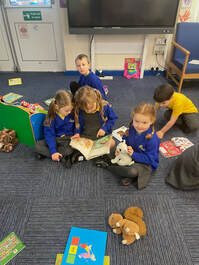
Examples of Bullying
Racist bullying – an incident which is perceived to be racist by the victim or any other person. This can be in the form of:
Sexual bullying – this is generally characterised by:
Sexual orientation – this can happen even if the pupils are not lesbian, gay or bisexual. Just being different can be enough. This can be in the form of:
Gender identity – this relates to bullying in connection to gender and gender stereotyping.
SEN or disability – These pupils are often at greater risk of bullying. This can be characterised by:
Cyber/Text bullying – this is on the increase and can involve pupils receiving threatening or disturbing messages from possibly anonymous callers.
Appearance or health conditions – bullying because of their physical appearance or a health condition for example, a disfigurement, a traumatic injury, severe skin condition.
Home circumstance – bullying based on a person’s living arrangements, for example, young carers, and children in care.
Racist bullying – an incident which is perceived to be racist by the victim or any other person. This can be in the form of:
- verbal abuse, name calling, racist jokes, offensive mimicry
- physical threats or attacks
- wearing of provocative badges or insignia
- bringing racist leaflets, comics or magazines
- inciting others to behave in a racist way
- racist graffiti or other written insults, even against food, music, dress or customs
Sexual bullying – this is generally characterised by:
- abusive name calling
- looks and comments about appearance, attractiveness, emerging puberty
- inappropriate and uninvited touching
- sexual innuendos and propositions
- pornographic material, graffiti with sexual content
Sexual orientation – this can happen even if the pupils are not lesbian, gay or bisexual. Just being different can be enough. This can be in the form of:
- use of homophobic/biphobic language
- looks and comments about sexual orientation or appearance.
Gender identity – this relates to bullying in connection to gender and gender stereotyping.
SEN or disability – These pupils are often at greater risk of bullying. This can be characterised by:
- name calling
- comments on appearance
- comments with regard to perceived ability and achievement levels.
Cyber/Text bullying – this is on the increase and can involve pupils receiving threatening or disturbing messages from possibly anonymous callers.
Appearance or health conditions – bullying because of their physical appearance or a health condition for example, a disfigurement, a traumatic injury, severe skin condition.
Home circumstance – bullying based on a person’s living arrangements, for example, young carers, and children in care.

